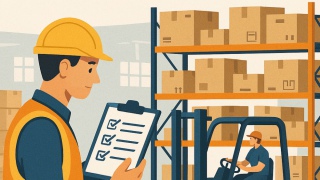On-Demand Warehousing: The Uber of Storage?
In today’s fast-moving digital economy, traditional logistics models are being redefined. One of the most transformative innovations is on-demand warehousing—a flexible, scalable solution that’s reshaping how businesses manage inventory and distribution. Much like Uber revolutionized transportation, on-demand warehousing is changing the way companies think about storage.

What Is On-Demand Warehousing?
On-demand warehousing allows businesses to rent warehouse space and logistics services on a short-term or flexible basis. Instead of committing to long-term leases or investing in infrastructure, companies can access storage when and where they need it.
This model connects businesses with available warehouse capacity through digital platforms—similar to how Uber matches riders with drivers. It’s fast, efficient, and tailored to the needs of modern commerce.
Looking for flexible storage in Belgium?.
Why Flexibility Matters
Flexibility is the cornerstone of on-demand warehousing. In a world of fluctuating demand, seasonal peaks, and unpredictable supply chains, businesses need logistics solutions that can adapt instantly.
Key advantages:
-
Scale storage during peak seasons or product launches
-
Respond quickly to supply chain disruptions
-
Test new markets without permanent infrastructure
This is especially valuable for e-commerce brands, retailers, and SMEs seeking agility without long-term commitments.
The Role of Technology in Modern Logistics
Modern logistics is powered by smart technology. On-demand warehousing integrates with cloud-based warehouse management systems (WMS), real-time tracking tools, and data analytics platforms.
These systems enable:
-
Real-time inventory visibility
-
Automated order fulfillment
-
Seamless integration with e-commerce platforms
-
Efficient returns management
Want to streamline your logistics?.
Business Benefits of On-Demand Warehousing
| Benefit | Description |
|---|---|
| Flexibility | Scale operations based on demand |
| Cost Efficiency | Avoid capital investment in infrastructure |
| Market Expansion | Access storage in new regions |
| Tech Integration | Use modern tools for inventory and order management |
| Sustainability | Optimize resources and reduce waste |
How It Works
On-demand warehousing platforms act as marketplaces. Warehouse providers list available space and services; businesses search and book based on their needs. Agreements are short-term, and services can include:
-
Storage
-
Order picking and packing
-
Last-mile delivery
-
Returns handling
This model offers a plug-and-play logistics solution for companies of all sizes.
Use Cases
-
E-commerce: A webshop runs a flash sale and rents extra space for a month.
-
Retail: A brand enters a new market and stores products near its customers.
-
Manufacturing: A supplier faces delays and temporarily stores components off-site.
The Future of Logistics Is On-Demand
On-demand warehousing reflects a broader shift toward flexibility, speed, and digital integration in logistics. It’s not just a trend—it’s a strategic advantage.
As businesses seek to optimize supply chains and reduce overhead, this model offers a smart, scalable alternative to traditional warehousing.
Ready to Go On-Demand?
At , we offer tailored on-demand warehousing solutions across Belgium. Whether you need short-term storage, fulfillment services, or scalable logistics support—we’re here to help.
? to find the perfect storage solution for your business.
_0x70_d59.png)



